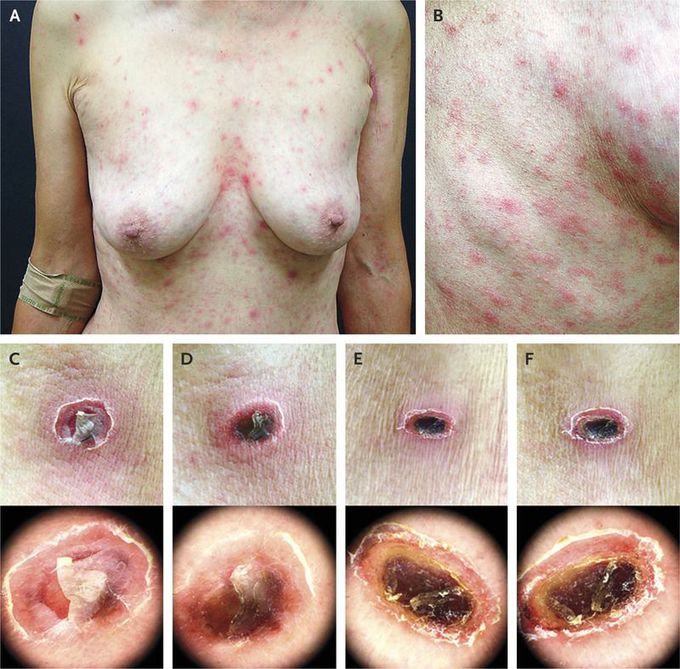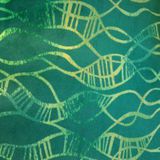


Scrub Typhus
A 65-year-old woman was admitted with fever and rash that had developed 3 days and 1 day before admission, respectively. On physical examination, an erosion 1.5 cm by 1.5 cm with a torn bulla was observed in the right axilla, and a generalized, nonpruritic, maculopapular rash was found over the whole body (Panels A and B). The daily appearance of eschar was evaluated by dermoscopy, and routine photography was performed from the first through the fourth hospital day (Panels C through F). Over time, the center of the eschar developed a black crust covering the ulcer, which was surrounded by an erythematous rim. On the fourth day, the rash became faint. Indirect immunofluorescence assay revealed an Orientia tsutsugamushi (formerly known as Rickettsia tsutsugamushi) antibody titer of 1:640. The clinical course was improved after administration of oral doxycycline at a dose of 100 mg twice daily for 7 days. The patient continued to do well, and her condition was stable 2 weeks after discharge. Scrub typhus is a miteborne disease caused by O. tsutsugamushi. Symptoms of acute scrub typhus typically include a fever and maculopapular rash with a primary lesion that evolves over time, as described in this clinical vignette. The disease is transmitted by trombiculid mites, also known as chiggers, and is endemic in parts of Asia. The clinical scenario and typical black eschar are often key to the diagnosis.


